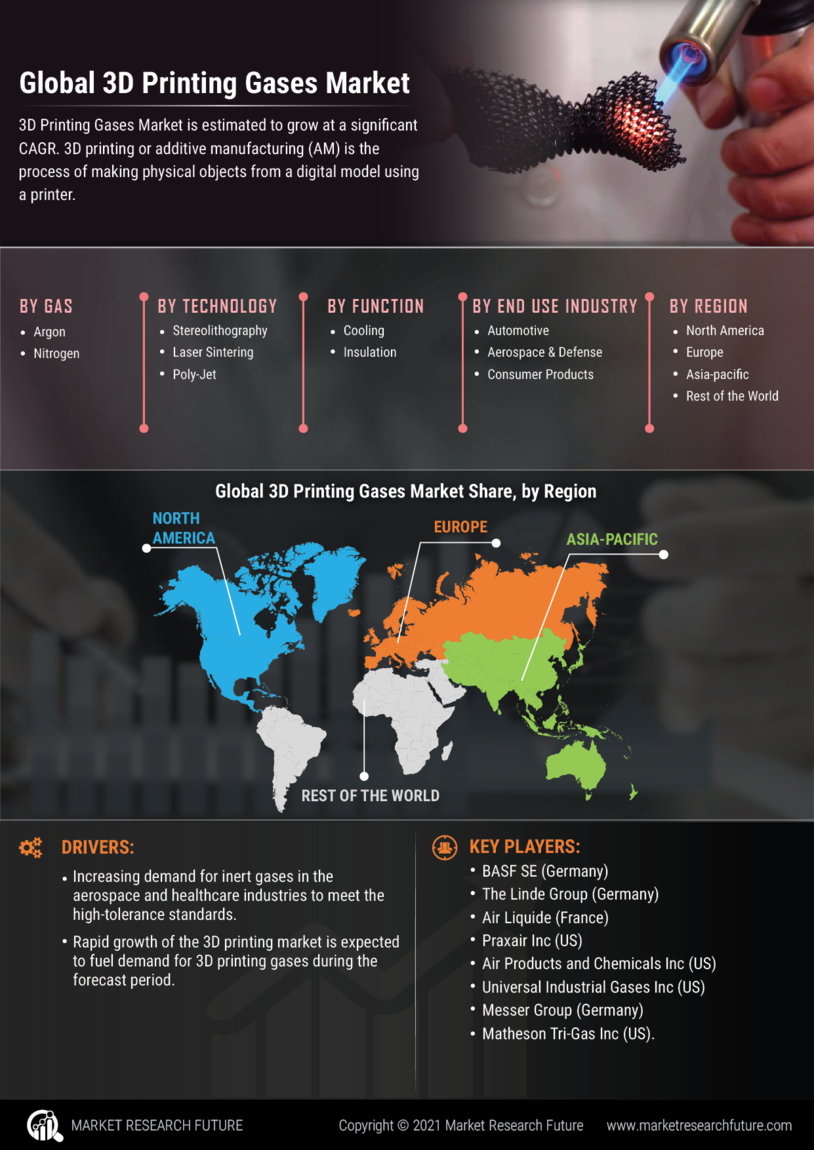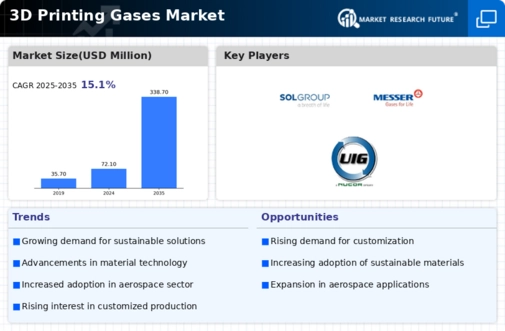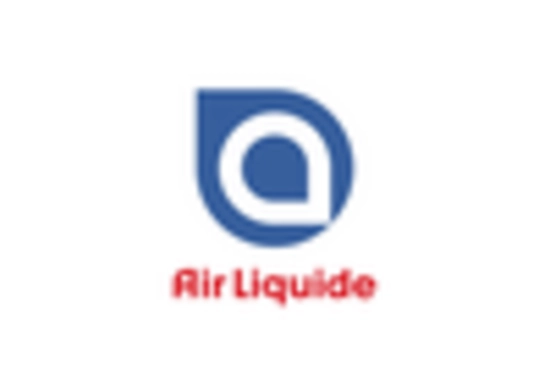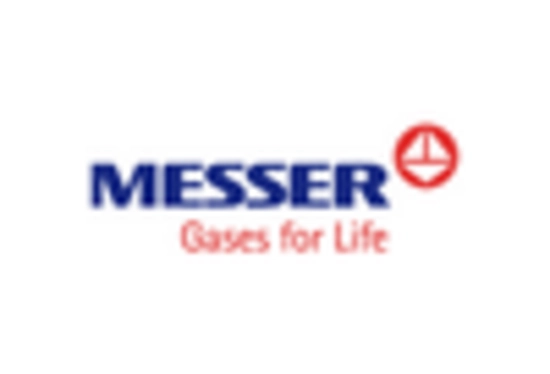Advancements in 3D Printing Techniques
Advancements in 3D printing techniques are significantly impacting the 3D Printing Gases Market. Innovations such as multi-material printing and improved layer adhesion are enhancing the capabilities of 3D printing, leading to a greater demand for specific gases that optimize these processes. For example, the use of carbon dioxide and other specialty gases can improve the quality of prints and reduce production times. As these advanced techniques become more prevalent, the need for high-quality gases that can support complex printing requirements is likely to increase. Market forecasts suggest that the 3D Printing Gases Market could see a growth rate of approximately 10% over the next few years, driven by the continuous evolution of printing technologies.
Expansion of Material Options in 3D Printing
The expansion of material options available for 3D printing is significantly influencing the 3D Printing Gases Market. As manufacturers develop new materials, including metals, polymers, and composites, the requirement for specific gases to facilitate these processes becomes increasingly critical. For instance, inert gases are essential for metal 3D printing to prevent oxidation and ensure the integrity of the final product. The introduction of innovative materials is expected to propel the market for 3D printing gases, as companies seek to optimize their production capabilities. Market analysts predict that the demand for specialty gases will grow in tandem with the diversification of materials, potentially leading to a market size increase of approximately 15% annually over the next five years.
Regulatory Support for Additive Manufacturing
Regulatory support for additive manufacturing is emerging as a significant driver for the 3D Printing Gases Market. Governments and regulatory bodies are increasingly recognizing the potential of 3D printing to enhance manufacturing efficiency and sustainability. This recognition often translates into favorable policies and funding initiatives aimed at promoting research and development in the field. Such support not only encourages innovation but also stimulates the demand for gases that are essential in various 3D printing processes. As regulations evolve to accommodate the growing use of 3D printing technologies, the 3D Printing Gases Market is likely to benefit from increased investments and a broader acceptance of additive manufacturing practices across different sectors.
Increasing Adoption of 3D Printing Technologies
The rising adoption of 3D printing technologies across various industries is a primary driver for the 3D Printing Gases Market. As sectors such as aerospace, automotive, and healthcare increasingly integrate additive manufacturing into their production processes, the demand for specialized gases, including argon and nitrogen, is expected to surge. These gases play a crucial role in enhancing the quality and precision of printed materials. According to recent estimates, the 3D printing market is projected to reach a valuation of over 40 billion USD by 2027, indicating a robust growth trajectory. This trend suggests that the 3D Printing Gases Market will likely experience parallel growth, driven by the need for high-performance gases that support advanced manufacturing techniques.
Growing Focus on Customization and Personalization
The growing focus on customization and personalization in manufacturing is driving the 3D Printing Gases Market. As consumers increasingly demand tailored products, manufacturers are turning to 3D printing as a solution to meet these needs efficiently. This shift necessitates the use of specialized gases that can enhance the quality and performance of customized items. Industries such as fashion, healthcare, and consumer goods are particularly influenced by this trend, as they seek to leverage 3D printing to create unique offerings. The customization trend is expected to propel the 3D Printing Gases Market, with projections indicating a potential market growth rate of around 12% annually as companies invest in technologies that support personalized production.


















Leave a Comment